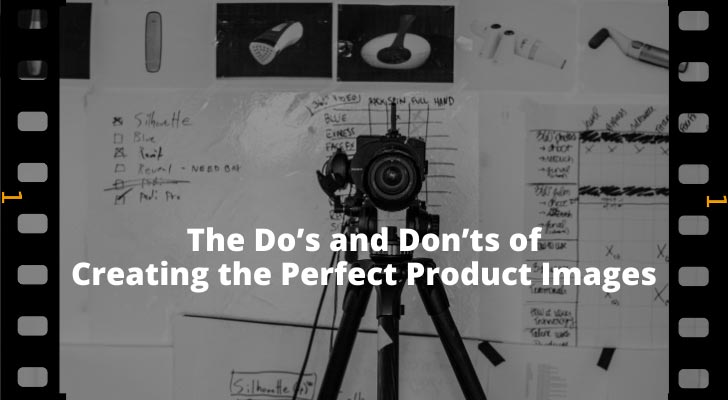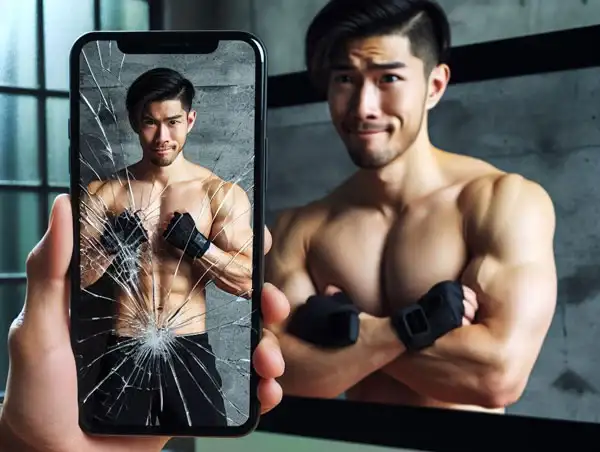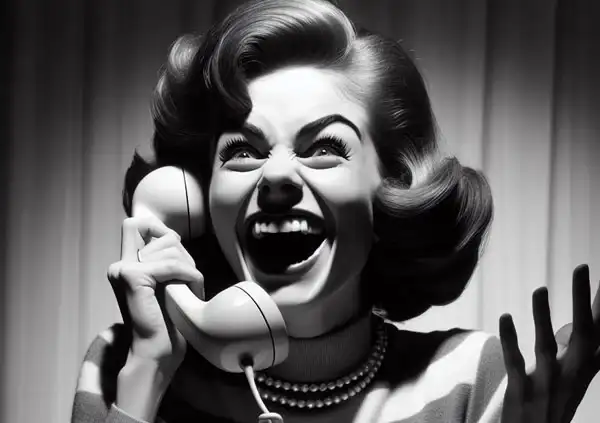The best way to showcase products is through beautiful photographs, we know that. "Use high-res images", we know that too. "Focus on lighting well", "don't ignore the background", etc...apart from common sense, what should we really be mindful of.
An excellent product photo highlights an item’s benefits. The user gets a good idea of what they’ll receive, so the order meets their expectations.
The human brain processes images 60,000 times faster than text. Didn't know that? That's a staggering difference, isn't it? Studies have also shown that people can recall more than 2,500 pictures with at least 90% accuracy several days post-exposure, even after seeing them for only a brief period.
This is partly why visuals are so impactful in marketing. So listen, here are the do's and don'ts of creating the perfect product images. Here we go.

Did You Know?
- 93% of consumers consider visual content to be the key deciding factor in a purchasing decision (Source: MDG Advertising).
- Products with high-quality images are 40% more likely to be shared on social media (Source: Justuno).
- 22% of online product returns are because an item looks different than the photos (Source: E-tailing Group).
- 67% of consumers say that the quality of a product image is "very important" in selecting and purchasing a product (Source: Jeff Bullas).
- Images that feature a white background are preferred by 38% of e-commerce sites for their clarity and consistency (Source: BigCommerce).
Do: Play with Creative Angles
When you're taking product photos, have you ever thought about ditching the traditional straight-on shots? Getting creative with angles can really elevate the look of your product. Imagine capturing a coffee mug from above, showing off a unique handle design, or a side shot of a sneaker to emphasize its sleek profile. You want to showcase the best features of your product in a way that standard angles might not, right?
You see, creative angles can add depth and dimension to your images. For instance, shooting a watch from a lower angle can make it look more prestigious and dominant. Similarly, capturing a piece of jewelry from an angle that catches the light just right can highlight its sparkle and craftsmanship.
This way, you can bring out the character and uniqueness of your product. You want your customers to feel like they're seeing something special, right?
Now, this doesn't mean you should go crazy and shoot from any odd angle. The trick is to find angles that enhance your product's appeal. Think about what makes your product unique and how you can use angles to spotlight those features. Maybe it's the texture, the shape, or a specific detail that sets it apart. You want your customers to notice these things, don't you?
Do: Incorporate Storytelling Elements
A good story can make a world of difference, right? The story of experience, the lifestyle, and the emotions it evokes. For instance, imagine you’re selling a vintage teacup. Instead of just a plain shot, how about staging it with a steaming pot of tea, an open book, and a comfy chair by a window? Suddenly, it’s not just a teacup; it’s a relaxing Sunday morning.
The story taps into the customer's imagination. It helps them picture themselves using the product. A pair of hiking boots photographed on a rugged trail? It screams adventure and exploration, right?
The trick is to create scenes that resonate with your users. Like painting a picture where your product is not just an object, but a character in a larger narrative. You want your customers to think, “That’s exactly where I see myself,” don't you?
Did You Know?
- Using professional photos can increase sales by up to 30% (Source: Tyche Softwares).
- 60% of consumers are more likely to consider or contact a business that has an image show up in local search results (Source: BrightLocal).
- E-commerce sites that use 360-degree images see an improvement in conversion rates by as much as 47% (Source: Internet Retailer).
- High-quality images can increase engagement by up to 94% (Source: Skyword).
- 70% of e-commerce shoppers say the product image is very important when making their purchase decision (Source: BigCommerce).
Do: Use Interactive Images
"Interactive? So I just... poke it harder? This phone's not responding... Must need more... interaction!"
Interactive images are like a breath of fresh air in the world of online shopping. They're not just pictures; they’re experiences. Imagine a potential buyer hovering over an image, and it reveals hidden features, close-up views, or even different color options. Sounds cool, right?
It’s like giving a virtual tour of your product. For complex items, like electronics or clothing with intricate details, this method is a winner. Customers can click parts of the image to learn more, see different angles, or understand the product better. Isn’t it great when customers can interact with a product image just like they would in a physical store?
Do: Experiment with Lighting Colors
Now, let's talk about lighting colors. Traditional product photography often sticks to standard white lighting, but why not mix it up? Colored lighting can change the game by setting a mood or highlighting certain aspects of a product. Imagine a lamp against a cool blue backdrop for a serene, modern vibe.
Or a line of skincare products under a soft pink light, evoking a sense of gentleness. You get the picture, right? You're trying to make the product look good; you want to convey a feeling, a lifestyle. You're telling a story through hues and shades. Surely this will make your products pop in a sea of sameness.
Did You Know?
- Adding more than one image to a product page can increase sales by up to 58% (Source: VWO).
- 85% of consumers want to see at least 2-3 images before making a purchase (Source: Weebly).
- 78% of online shoppers want photographs to bring products to life (Source: Shopify).
- Products with larger images have been shown to increase sales by 9% (Source: Visual Website Optimizer).
- 30% of online shoppers want to see products from multiple angles (Source: Salsify).
Do: Incorporate User-Generated Content
Finally, let’s dive into user-generated content (UGC). It’s like a goldmine of authenticity. When customers see real people using your product, it builds trust and relatability. Think about it, isn't it more convincing when you see a product being used by someone like you, rather than a model in a studio?
Encourage your customers to share photos of themselves using your product. This not only provides you with a diverse range of images but also promotes customer engagement. And when you feature these images on your social media or website, it gives a shoutout to those customers, creating a sense of community around your brand. It's a great way to show appreciation, isn't it?
UGC can come in many forms – photos, videos, reviews. It tells a story from the customer’s perspective, and that’s invaluable. These real-life images provide a level of authenticity that professional shots might not always capture. Plus, they showcase your product in a variety of settings and uses, offering new perspectives to potential buyers.
Incorporating UGC also means staying up-to-date with how your products are being used and perceived. It’s like having a finger on the pulse of your customer base. This can be incredibly insightful for future product development or marketing strategies, right?
Did You Know?
- 53% of consumers find that images are more important than ratings or reviews (Source: BigCommerce).
- E-commerce customers are 80% more likely to buy a product if they can see it in 3D (Source: Shopify).
- Including a video on a landing page can increase conversion rates by 80%, and this includes product videos and images (Source: Unbounce).
- Color accuracy in images influences 85% of the decision-making process for shoppers (Source: Colorcom).
- 72% of millennials say that visual content makes them more likely to purchase a product (Source: Animoto).
Don’t: Think You Know It All
If you’ve taken product photos for a while, it’s tempting to think you know everything there is to understand about taking images. The problem is trends change, equipment advances and what worked yesterday may not wor today.
Listen to others in the industry and take online courses to learn new techniques. You should always seek more skills and grow to stay on top of your game.
Don't: Stick to Static Shots Only

"Whoops, seems my lunch is having a conversation."
Static shots are great, but they don't always tell the full story. Adding motion to your product images can bring a whole new level of interest and realism. Imagine seeing a scarf fluttering in the wind or a bike in mid-pedal. It adds a dynamic element that static shots just can't capture.
Incorporating motion can also convey how your product is used or how it functions. For example, showing a blender in action with fruits flying around can be way more exciting than just a picture of a blender sitting on a counter. You want them to see your product as part of their lives, right?
But how do you capture motion? It's not as hard as it might seem.
- You could use a slow shutter speed to create a sense of movement, like blurring the wheels of a moving car.
- Or you could capture a moment just before action, like a basketball suspended in the air before a dunk.
These kinds of images can create anticipation and excitement. They make your customers feel like they're right there, don't they?
Bringing motion into product photography also means thinking about the story you want to tell. What do you want your customers to feel when they see your product? Excitement, comfort, adventure? Use motion to convey these feelings. Maybe it's a pair of running shoes on a trail, mid-stride, suggesting speed and endurance. You're selling an experience, right?
In the end, both creative angles and motion are about making your product stand out and telling its story in a compelling way. You want your customers to stop, look, and feel something when they see your images, right?
Don’t: Disregard Seasonal Themes
Now, about seasonal themes, they’re like a secret weapon, aren't they? People’s shopping habits and interests often change with the seasons. So, your product images should reflect that.
A cozy sweater might look great in a fall setting with warm, golden leaves, but what about in winter? Picture it with snow in the background, maybe some festive decorations. It instantly feels more appealing for the season, right?
Seasonal themes help your products feel fresh and relevant. During the holidays, adding some twinkling lights or ornaments can create a festive mood. And in the summer, brighter, more vibrant backgrounds can make your products pop.
You're connecting with what your customers are feeling and experiencing at that time of the year. You're trying to show that your brand is dynamic and in tune with the seasons. You're essentially telling your customers, “We get you, and we’re right here with you,” and that's pretty powerful, isn’t it?
In essence, incorporating storytelling elements and seasonal themes can transform your product images from just being visually appealing to being emotionally engaging. Again, you're creating a connection, a narrative that your customers want to be part of. Sounds like a winning strategy, right?
Don’t: Underestimate the Power of Scale Illusions

The scale illusions. This is where you get to be a bit of a magician. By playing with the perceived size of your product, you can create an eye-catching and memorable image.
Think about a picture where a pair of headphones looks as big as a car, or a watch that seems to tower over a cityscape.
You're creating a talking point, something that makes people stop scrolling and take a second look. It’s a playful approach that can make your product memorable. And isn’t that the goal, to stand out and be remembered?
Don’t: Neglect the Unboxing Experience

An unboxing experience is more than just opening a box, right? The anticipation and excitement that builds as you unwrap a product. This experience can be a powerful tool in product photography.
Imagine showcasing a series of images that capture the process of unboxing. Each step, from slicing through the tape to revealing the product nestled in its packaging, adds to the story. It's like a mini adventure before the main event.
But why stop at static images? You could create a short video or a GIF showing the unboxing process. This gives potential customers a sense of what to expect and builds excitement. Think about it, doesn't a well-presented product make a better first impression? Also, consider the packaging material. Is it;
- Eco-friendly?
- Stylish?
- Practical?
These details matter, as they reflect your brand’s values and attention to customer experience.
Let's not forget the 'wow' factor. Personal touches, like a thank you note, branded tissue paper, or custom stickers, can elevate the unboxing experience. They turn a simple act of opening a box into a memorable brand interaction, don't they?
Don't: Forget About the Environment
Now, onto the environment. Where does your product fit in the real world? For instance, if you're selling a camping tent, show it pitched in a serene forest setting. This kind of environmental context does wonders. It helps customers visualize the product in use, in their lives. It’s all about making it relatable, right?
But it's more than just setting a scene. It's also about being responsible and conscious of environmental impacts. If your brand is eco-friendly, flaunt it. Show your products in natural settings, use sustainable packaging in your imagery, or highlight any eco-friendly features. This resonates with environmentally conscious consumers and aligns with a growing trend towards sustainability.
Also, don’t shy away from showing your product in different settings or weather conditions. It demonstrates versatility and durability, qualities customers often look for. Create a connection with your customer's lifestyle or aspirations, and that's pretty powerful, right?
There’s No Such Thing as Perfect
Even though your goal might be to create the perfect product images, understand there will be flaws in your photographs. When you first begin, you’re learning the craft. But even professionals make mistakes.
Take way more images than you need. This allows you to come up with at least a few great shots. Don’t be afraid to edit heavily. As time goes on, creating the perfect composition becomes easier. In the meantime, take your time and don’t be afraid to retake images when needed.
Did You Know You Already Have A LOT To Sell?
So What's Your Problem?




